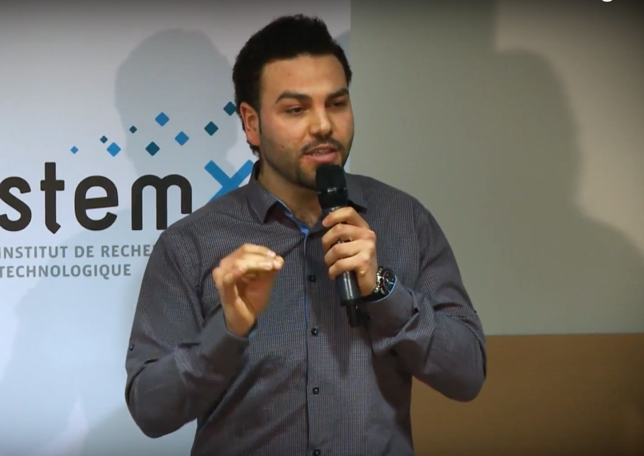Omar Dib joined SystemX in June 2014 to begin a thesis on the dynamic rerouting of passengers in multimodal transport systems. He spoke to us about his PhD in the Modeling – Interoperability – Cooperation (MIC) and Modeling Mobility Solutions (MSM) projects, supervised by the University of Technology of Belfort-Montbéliard (UTBM).
What was the subject of your thesis?
I focused in my PHD on studying the issue of dynamic rerouting of passengers in multimodal transport systems. In concrete terms, my advisors and I developed a decision support tool designed to provide passengers with alternative solutions when the transport system encounters disruptions. These latter may come in the form of passengers accidents, technical problems or even delays and congestions.
The first step in developing the solutions was to model the transport network, which involved describing their various components – stations, platforms, vehicles and passengers – and defining the interactions between the components.
We then proposed strategies for rerouting passengers – offering them new itineraries to reach their destination. We had to consider several factors while developing the dynamic rerouting strategy.
- Firstly, factors related to passengers’ transport preferences: for each itinerary, there will be some who prefer to minimize travel costs and others the number of transfers, for example.
- Besides, the transport system is a dynamic network that is constantly evolving; we therefore had to consider its real-time variations using algorithms and mathematical models.
- Other important constraints also came into play, such as the passenger capacity of the rerouting solutions implemented; for example, a shuttle bus cannot hold 300 passengers.
To deal with these issues, we developed intelligent algorithms from the family of genetic algorithms capable of performing natural selection between several possible solutions within reasonable computing effort. When applied to transport systems, these algorithms enabled us to offer users suitable rerouting solutions.
What did you gain from your doctorate?
During my three-year thesis, I came into contact with a lot of industrial companies and a broad scientific community. I also took part in several seminars and conferences, which helped me develop my technical and personal skills.
On the technical and scientific side, IRT SystemX offered an ideal work environment in order to develop my expertise in mobility. I also received academic and industrial guidance that enabled me to build a solid foundation of scientific knowledge.
What is your fondest memory of your time at SystemX?
It was the ThesisDay@SystemX event, which was held for the first time in February 2017. The goal was for PhD students at the institute to be able to present their research in only three minutes, in front of a very diverse audience. We learned how to explain our thesis in layman’s terms and show the relevance of our scientific work. It wasn’t an easy exercise but we were lucky enough to have two days of training from Agent Majeur, a science communication agency. I learned a great deal from the event, which also enabled me to find out about the topics of other PhD students at the institute whom I hadn’t had the chance to speak to.
What projects do you have in the pipeline?
I was hired by IRT SystemX as a research engineer on the Blockchain for Smart Transactions (BST) project. I’m fascinated by Blockchain technology – it opens the door to many advances in our society. I’m excited to have the chance to study it, to discover its limits and test its applications.
More about Omar
 Thesis topic: Dynamic rerouting of passengers in multimodal transport systems
Thesis topic: Dynamic rerouting of passengers in multimodal transport systems
R&D project: Modeling – Interoperability – Cooperation (MIC) and Modeling Mobility Solutions (MSM)
Diplomas: Engineering degree from the University of Technology at Belfort and Montbéliard (UTBM).


![[Video] Interview with Fereshteh Asgari](https://www.irt-systemx.fr/wp-content/uploads/2025/07/Capture-décran-2025-07-08-à-15.26.13.png)
